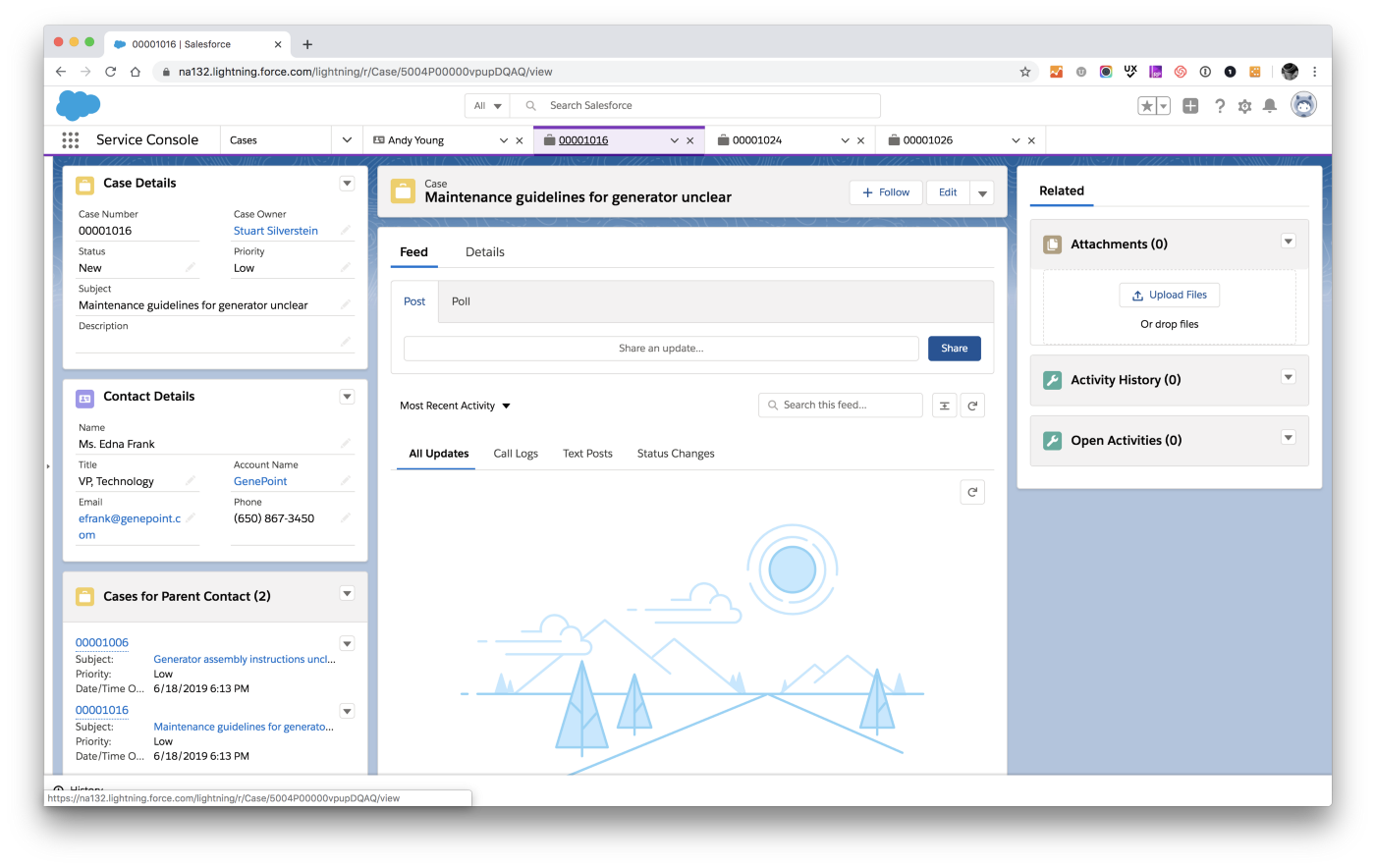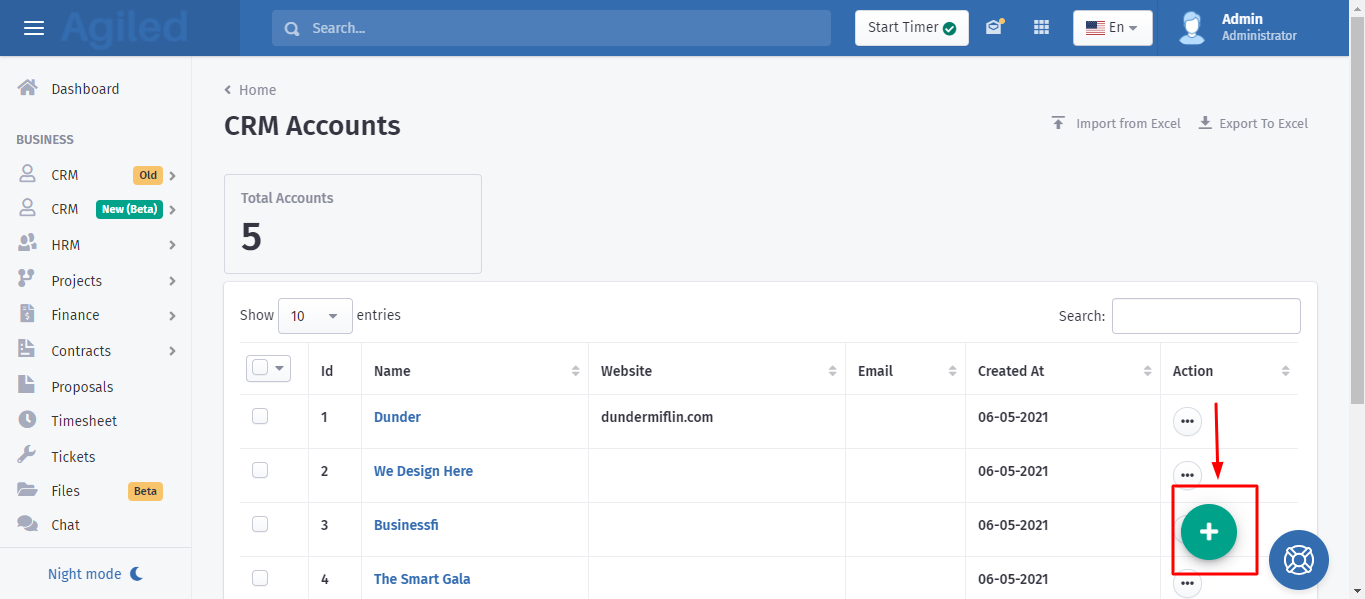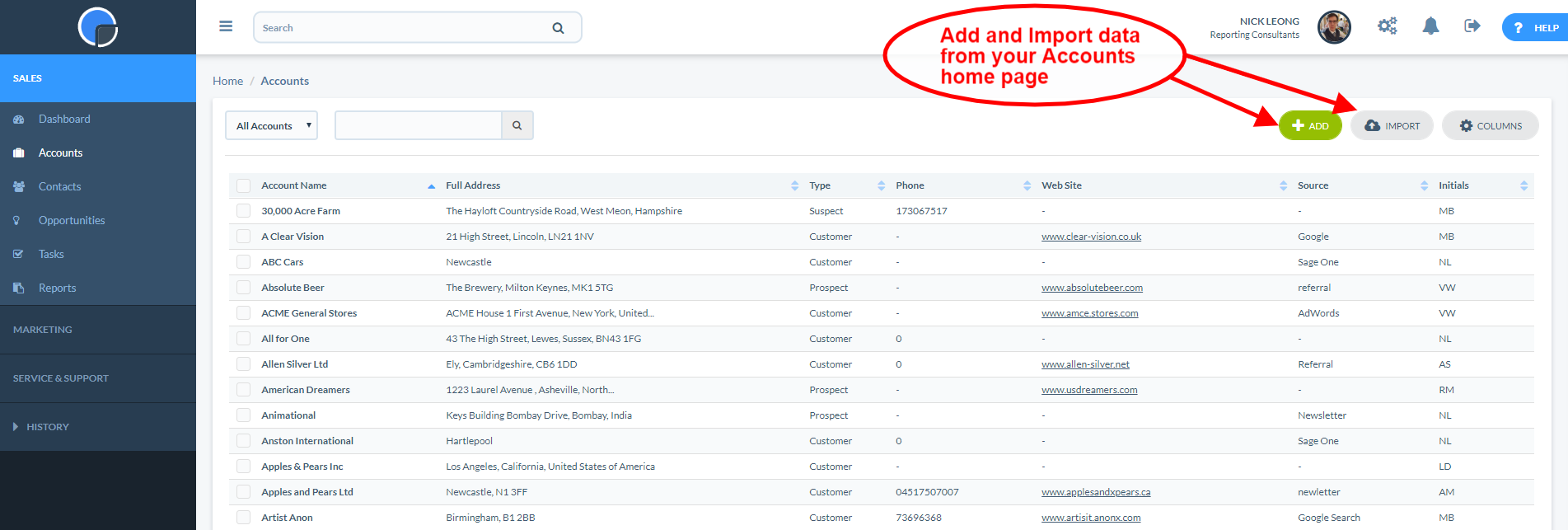crm account unlocking seamless customer management invites you to discover how businesses leverage dedicated digital profiles to keep every client interaction efficient and meaningful. Whether you’re new to the world of CRM or looking to refine your strategy, understanding the ins and outs of crm accounts will elevate your approach to nurturing business relationships.
A crm account acts as the backbone of customer relationship management, storing essential details, tracking communications, and streamlining workflows all in one place. With robust features like contact management, segmentation, automation, and security controls, crm accounts empower organizations to personalize outreach and manage leads or customers effectively. The right setup and maintenance of your crm account can make the difference between scattered information and a well-oiled, data-driven operation.
Definition and Purpose of CRM Account

Customer Relationship Management (CRM) accounts are specialized digital profiles or records within a CRM platform, designed to centralize and organize every aspect of a business’s interaction with its customers, prospects, or partners. These accounts are fundamental tools that help organizations track, manage, and enhance their relationships throughout the customer lifecycle.
The core function of a CRM account is to collect, store, and make accessible all relevant data regarding individual or organizational contacts. These data points range from basic contact details to sales histories, communication logs, support tickets, and even social media engagement. By maintaining a detailed and up-to-date CRM account, companies can better tailor their services, personalize communication, and streamline workflows, which ultimately leads to improved customer satisfaction and stronger business outcomes.
Primary Functions and Roles in Business Operations
Within a business context, CRM accounts play several crucial roles. They enable sales representatives to track leads and opportunities, allow support teams to access customer history for efficient problem resolution, and provide marketers with insights for highly targeted campaigns. CRM accounts also facilitate collaboration across departments, ensuring that all teams have the information they need to deliver a cohesive customer experience.
Typical Data and Information Stored
A CRM account will generally include a variety of data categories to support daily operations and strategic planning. Common information stored includes:
- Contact details (name, email, phone, address)
- Company information (industry, size, location, website)
- Communication logs (emails, calls, meetings)
- Sales data (deals, pipeline status, transaction history)
- Customer support tickets and case notes
- Custom fields for industry-specific requirements
This holistic data collection empowers teams to gain a 360-degree view of each customer or account, driving both day-to-day efficiency and long-term relationship success.
Key Features of CRM Accounts
CRM accounts are powerful because of the robust features they offer. These features are designed to maximize productivity, transparency, and customer understanding at every stage of engagement.
Essential Features and Their Contributions
The following core features are typically present in modern CRM accounts and play pivotal roles in supporting business processes:
| Feature | Purpose | Benefits | Example of Use |
|---|---|---|---|
| Contact & Company Management | Centralizes all information related to customers, prospects, or organizations | Improves access to customer data; ensures data consistency | Viewing all conversations and deal history for a single client |
| Activity Tracking | Logs all communications, tasks, and interactions | Helps teams stay updated; reduces duplicate efforts | Recording meeting notes and follow-ups |
| Segmentation and Tagging | Organizes accounts into targeted groups for campaigns and workflows | Enables personalized marketing and sales outreach | Tagging leads based on interests or deal stage |
| Integration Capabilities | Connects CRM with email, calendar, or third-party platforms | Streamlines workflow and eliminates data silos | Auto-syncing emails and calendar invites with client records |
These features, when properly utilized, help businesses maintain comprehensive customer records, automate routine processes, and deliver personalized experiences, which are crucial for building lasting customer relationships.
Types of CRM Accounts
Businesses use different types of CRM accounts depending on their size, structure, and customer management needs. By categorizing CRM accounts, organizations can organize their data and workflows more effectively.
Main Categories of CRM Accounts
CRM accounts typically fall into two broad categories: personal and organizational. Each type serves a distinct purpose and is tailored to specific usage scenarios.
- Personal CRM Accounts: Used to manage individual contacts, such as freelance clients or single-point customer relationships.
- Organizational CRM Accounts: Designed to manage businesses or organizations as entities, often involving multiple contacts and complex relationships within a single account.
Comparison: Personal vs. Organizational CRM Accounts
Understanding the difference between these two types helps businesses decide how to structure their CRM systems:
- Personal CRM accounts are ideal for one-on-one relationships, such as consultants managing individual clients.
- Organizational CRM accounts work best when dealing with companies that have multiple stakeholders, such as a B2B sales team handling accounts with several decision-makers and departments.
Scenarios for Each CRM Account Type
In practice, personal CRM accounts are most applicable for solo professionals or small businesses offering personalized services, while organizational CRM accounts are suited for enterprises or teams handling complex sales cycles, partner management, or account-based marketing initiatives. For example, a legal advisor might use personal CRM accounts for managing clients, whereas a SaaS company would use organizational CRM accounts to manage their portfolio of business clients.
CRM Account Setup and Configuration
Proper setup and configuration of CRM accounts are essential to ensure smooth adoption and maximize system benefits. The initial setup phase lays the foundation for reliable data, workflow efficiency, and user satisfaction.
Procedures and Best Practices for Setup
Setting up a new CRM account involves more than data entry—it requires deliberate planning around data structure, user roles, and system integration. Adhering to best practices during this phase prevents future headaches and supports scalable growth.
Step-by-Step Initial Configuration
Below is a structured approach for configuring a new CRM account:
- Define business objectives for CRM usage and identify key stakeholders.
- Customize account fields to capture relevant data (e.g., industry, deal size).
- Import existing contacts and company data, ensuring data cleanliness.
- Set up user roles and permissions based on organizational structure.
- Integrate with essential business tools such as email, calendars, or marketing platforms.
- Establish data entry standards and protocols for consistency.
- Train users on system navigation, data input, and workflow processes.
- Monitor initial usage and gather feedback for continuous improvement.
Careful configuration at this stage ensures that the CRM account becomes a reliable resource for every team across the organization.
Managing Contacts and Data within CRM Accounts
Effective contact and data management within CRM accounts is crucial for building a comprehensive customer view and supporting smart decision-making. The right strategies help keep data organized, accessible, and actionable.
Methods to Add, Update, and Organize Contacts
Adding new contacts can be accomplished through manual entry, bulk imports from CSV files, or integrations with forms and third-party apps. Updating records is often managed via direct edits, automated workflows, or scheduled data hygiene processes to ensure accuracy. Organizing contacts typically involves using tags, segments, and custom fields to categorize and filter records efficiently.
Utilizing Tags, Fields, and Segmentation
Tags and segmentation are powerful tools in CRM data organization. Tags enable flexible labeling based on interests, status, or activity, while segments allow grouping by shared attributes for targeted communication and analysis. Custom fields let businesses capture unique data points critical to their processes.
Common Data Fields in CRM Accounts
The table below Artikels typical CRM data fields, their descriptions, input types, and practical examples:
| Data Field | Description | Input Type | Example |
|---|---|---|---|
| Full Name | Primary identifier for individual contacts | Text | Jane Smith |
| Email Address | Contact method for communication | [email protected] | |
| Company Name | Name of the organization or business | Text | Acme Corp |
| Deal Stage | Status of ongoing sales opportunity | Dropdown/Select | Prospecting, Negotiation, Closed Won |
| Tags | Flexible labels for dynamic segmentation | Multi-select | VIP, Webinar Attendee, Follow-up Required |
Consistently managing these data points provides a strong foundation for effective communication, analytics, and customer engagement strategies.
Security and Access Control in CRM Accounts
Securing data within CRM accounts is a top priority for businesses handling sensitive customer information. Robust security measures protect against unauthorized access, data breaches, and compliance violations.
Approaches to Data Security
Standard practices for securing CRM data include user authentication, role-based access control, data encryption (at rest and in transit), and regular security updates. Organizations must also implement backup protocols and monitor system activity for unusual behavior.
Typical User Roles and Permissions
User roles in CRM systems determine the level of access each individual or group has to the account’s data and functionalities. The table below Artikels common roles and their permissions:
| User Role | Permissions | Typical Use |
|---|---|---|
| Administrator | Full access to all data, settings, and user management functions | System configuration, user onboarding, security management |
| Manager | Access to team data, reporting tools, and workflow management | Performance tracking, resource allocation, oversight |
| Sales/User | Access to assigned accounts, edit permissions on contacts and deals | Customer interactions, deal updates, task completion |
| Read-only | View data without ability to edit or delete | Reporting, auditing, compliance checks |
Importance of Audits and Compliance
Regular audits are essential to ensure that CRM data management aligns with industry regulations such as GDPR or HIPAA. Routine reviews of user activity, data logs, and permission settings help identify risks early and maintain high standards of data integrity and privacy.
Integrations and Automation with CRM Accounts
Integrating CRM accounts with other business systems and leveraging automation are game-changers for operational efficiency and customer engagement. These capabilities help businesses scale their processes while reducing manual effort.
Significance of Integration
Connecting CRM accounts with tools like email marketing platforms, helpdesk systems, or e-commerce solutions creates a unified ecosystem where data flows seamlessly. This eliminates information silos, reduces redundant data entry, and ensures every team has access to the most up-to-date customer information.
Automation Features for CRM Accounts

Automation in CRM systems can take many forms, from automated email follow-ups and task assignments to sophisticated workflow triggers based on customer behavior. These features save time, reduce human error, and ensure timely responses to critical events.
An example of a lead nurturing automation workflow: When a new lead is added to the CRM, an automated sequence sends a welcome email, assigns a sales representative, and schedules a follow-up call. If the lead engages with the email, they are automatically moved to the next sales stage and receive targeted content based on their interests. This hands-off approach ensures leads are consistently engaged and reduces the risk of missed opportunities.
Common Challenges and Solutions in CRM Account Management
Even with robust CRM systems, businesses often face challenges in data management, user adoption, and system maintenance. Proactive solutions and preventive measures mitigate these issues and ensure long-term CRM success.
Frequent Issues and Practical Solutions
Effective CRM management requires awareness of common pitfalls and a commitment to continuous improvement. Below is a list of widespread challenges and recommended responses:
- Data Inaccuracy: Implement validation rules, periodic audits, and user training on correct data entry.
- Low User Adoption: Provide engaging training, highlight benefits, and simplify workflows to encourage regular use.
- Duplicate Records: Use duplicate detection tools and enforce unique identifier requirements.
- Integration Gaps: Prioritize integrations with core business systems and review regularly for updates.
- Security Risks: Apply role-based permissions, enable multi-factor authentication, and schedule security reviews.
Strategies for Data Accuracy and User Adoption
Maintaining data integrity requires a multi-pronged approach. Establishing clear data entry protocols, automating routine data checks, and providing ongoing user education encourage accountability and high system usage. Regular feedback and system updates based on user needs further drive sustained adoption.
Best Practices for Optimizing CRM Account Usage
Optimizing CRM account usage requires intentional strategies and sustained effort. Adopting best practices ensures businesses extract maximum value from their CRM investments.
Summary of CRM Account Best Practices

The table below highlights actionable best practices, objectives, necessary actions, and anticipated outcomes:
| Best Practice | Objective | Action Steps | Expected Results |
|---|---|---|---|
| Standardize Data Entry | Ensure consistency and accuracy | Create standardized forms and mandatory fields | Cleaner data, improved reporting accuracy |
| Regular Training Sessions | Increase user proficiency and adoption | Schedule onboarding and ongoing workshops | Higher engagement and reduced user errors |
| Automate Routine Processes | Save time and reduce manual errors | Implement workflow automation for repetitive tasks | Operational efficiency and quicker follow-ups |
| Monitor and Review Data Quality | Maintain reliable and actionable records | Conduct regular audits and leverage data cleansing tools | Minimized duplications and outdated records |
Methods for Team Training and Consistent Data Entry
Ongoing user education is critical for CRM success. Schedule regular training sessions, develop easy-to-follow documentation, and establish mentorship or power-user programs to support new team members. Enforce data entry standards by making key fields mandatory, providing real-time prompts, and regularly reviewing records for compliance.
Illustrative Use Cases and Scenarios
CRM accounts can be tailored to fit the needs of virtually any industry or business model. Real-world scenarios demonstrate the diverse ways CRM accounts can drive measurable results.
Descriptive Scenarios Across Industries
Below is a selection of industries and how they use CRM accounts to address unique business challenges and opportunities:
- Retail: Retailers leverage CRM accounts to track customer purchase histories, send targeted promotions, and manage loyalty programs. By segmenting customers based on buying behavior, retail brands personalize marketing campaigns and increase repeat purchases.
- Financial Services: Banks and financial advisors utilize CRM accounts to maintain detailed records of client portfolios, monitor compliance activities, and schedule periodic reviews. This ensures personalized service and adherence to regulatory requirements.
- Healthcare: Clinics use CRM accounts to organize patient information, appointment schedules, and follow-up communications. By automating reminders and tracking treatment histories, healthcare providers improve patient satisfaction and streamline workflows.
- B2B SaaS: Software-as-a-Service companies use organizational CRM accounts to manage complex sales cycles, onboard clients, and monitor customer success metrics. Through automated onboarding workflows and lifecycle management, SaaS providers maximize retention and upsell opportunities.
- Nonprofits: Nonprofit organizations utilize CRM accounts to manage donor relationships, plan fundraising campaigns, and track volunteer activities. Centralizing donor data enables targeted outreach and more effective fundraising events.
These examples illustrate that regardless of industry, well-managed CRM accounts offer powerful tools to enhance customer knowledge, automate key processes, and drive meaningful business outcomes.
Final Wrap-Up
In summary, mastering the use of crm account tools paves the way for better organization, stronger client relationships, and measurable business growth. By following best practices and harnessing automation and integrations, teams can transform routine customer management into an engine for lasting success. No matter your industry or company size, an optimized crm account is your secret weapon for building trust and staying ahead in a competitive market.
Questions Often Asked
What is a crm account and why do businesses need it?
A crm account is a digital profile within a customer relationship management system that stores and organizes customer data, interactions, and activities. Businesses need it to streamline communication, track leads, and personalize the customer experience efficiently.
Can crm accounts be accessed remotely?
Yes, most modern crm accounts are cloud-based, allowing users to access customer information from anywhere with an internet connection.
How secure is the data stored in a crm account?
Data security depends on the CRM provider and your company’s security practices. Most reputable CRMs offer encryption, access controls, and compliance features to keep information safe.
Is it possible to integrate a crm account with other business tools?
Absolutely, crm accounts often support integrations with email platforms, marketing automation tools, e-commerce systems, and more to centralize data and automate workflows.
How can small businesses benefit from using crm accounts?
Small businesses can use crm accounts to improve organization, follow up on leads, maintain accurate contact records, and deliver personalized service without needing large teams.
